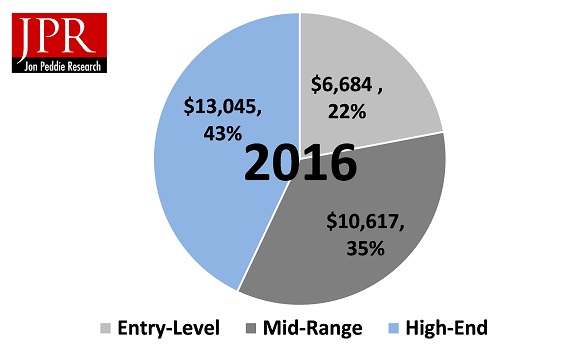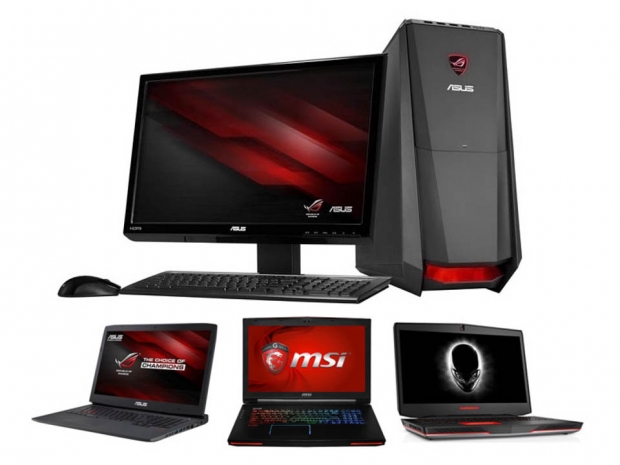In 2017, sales are expected to continue climbing as expensive top-tier gaming PCs help jumpstart the market’s average selling prices (ASPs).
$30 billion mark arrives ahead of schedule
Back in November 2008, following the launch of Intel’s X58 platform, a report from Jon Peddie Research indicated the total hardware market value for gaming PCs was just over $20 billion. At the end of 2016, the group’s latest numbers reported a market value of just over $30 billion – which includes $10.6 billion from high-end PCs. The original projection was that the PC gaming market wouldn’t reach $30 billion until 2018, indicating the industry has accelerated a bit quicker than some previous estimates from two years ago.

High-end gaming PCs account for 35% of market (via Jon Peddie Research)
According to Kevin Jones, Vice President of Micro Center, the year 2016 was no exception for the company’s own sales growth as its retail stores saw a 200 to 300 percent increase from a year ago. Micro Center currently operates 25 stores in 16 states across the US as well as an online store with local pickup.
North America’s retail PC stores face threat of consolidations
Jones said that North America’s retail channel has entered a “reshuffling phase” with many small PC business closing down due to increased competition. The larger private companies, including Newegg, Micro Center and Fry’s Electronics, have been able to maintain positive sales outlooks thanks to tight partnerships with brand vendors. Micro Center, for instance, has maintained a partnership with Intel that allows it to sell newer retail processors for a significant in-store discount versus other competitors.
Gaming PCs will reach 13 percent of consumer PC shipments in 2020
Last year, Intel estimated that gamers refresh their PCs roughly every two years, and suggested that enthusiast gaming PC shipments are growing at a compound annual growth rate (CAGR) of 26 percent. Gartner also predicted that gaming PC sales will rise from six million units in 2015 to 8.7 million units by 2020.
On a regional basis, JPR says the market for “high-end” PC gaming hardware is still largest in Europe and North America, but the Asia Pacific region continues to be the biggest and fastest-growing market for gaming PCs overall.
In a September report, Garner outlined four strategic alternatives for PC vendors to stay competitive in a plateauing PC market by 2020. “The traditional way of gaining shipment market share by competing on price to stimulate demand simply won't work for the PC market over the next five years,” said Tracy Tsai, research vice president at Gartner. The group’s report says that with current market conditions, consolidation of vendors is going to be inevitable and this will come at the expense of much needed venue. One of the suggestions given to channel partners like Newegg, Micro Center and Fry’s is to shift their focus away from PC shipment volumes and to focus more on profitability.
“Some vendors may need a whole new business and product strategy to turn their situation around. PC vendors need to identify their core competencies, evaluate their internal resources, and adopt one or more alternative business and product innovation models to stay in or leave the PC business.”




